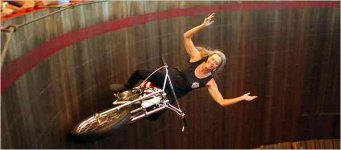hillzofvalp
100 kW
That's very true...
No harm in wanting it cheap but the realities make it difficult.hillzofvalp said:No, I agree with you. I'm sorry for sounding cheap... but I am cheap. give me your life's work for $200-300, please. :wink: After you sell your controller design to crystalyte for $80k.
I would think if you're building a controller this complex from scratch, you ought to have it with a pending patent...or some investors. How many different controllers have you built before?
I have faith in you.

The control board will work with any voltage / current combination since internally it doesn't work in volts and amps but in per unit (percent) so with the right hardware voltage input scaling and current sensors it should work.Nuts&Volts said:If I am reading this right you are designing this to function with various power stages. Would this controller be able to function with a 300-500V battery and IGBTs? I am not looking at current any higher than the 400A you are specing your sensors too.
Makes sense considering they are not that precise in other aspects of the motors. I guess even a mm error is significant in terms of electrical rotation on a hub motor.fechter said:I'm sure they're not super precise when they install the hall sensors in those motors and some phase error is highly likely. This could cause significant losses if they are off by a few degrees. Synthesizing the hall signals with a PLL might be one way around this.
Ricky_nz said:Makes sense considering they are not that precise in other aspects of the motors. I guess even a mm error is significant in terms of electrical rotation on a hub motor.fechter said:I'm sure they're not super precise when they install the hall sensors in those motors and some phase error is highly likely. This could cause significant losses if they are off by a few degrees. Synthesizing the hall signals with a PLL might be one way around this.
I'm hoping to use the PLL to provide angle reference for the vector control as an option but a similar technique could be used on simpler controllers. I'm not sure how the guys with the timing adjuster project handled it.
I've got a bit more debugging to do as my PLL seems to be locking on at the wrong frequency.
Thanks Lebowski,Lebowski said:I don't use a PLL as it takes too long to get lock. Plus a reliable lock detector is difficult.
Yep using the 6 edges is good and the PLL would have never been accurate at even those points unless running at a very constant speed which is not really reality, especially on a bumpy offroad situation.Lebowski said:I like this better than a PLL as at each of the 6 hall edges the phi is dead on. Also the response to speed up/slow down
is practically instantaneous (when the next hall edge comes). You don't need a lock detector to decide whether the PLL is
in lock and whether it's output makes sense.
Being vector control mine needs an angle all the time a probably higher accuracy.Lebowski said:The only place in my design where I use this phase algorithm is for back-emf sampling during calibration. The ADC's are triggered and the phi
is determined. When the ADC's are done their values are assigned to a bin based on phi (128 bins in 1 e-rotation). After every hall
TCFP is updated. A difference with the previous TCFP of more than 6% and the back-emf measurement is aborted, an
error is reported to the user (excessive slow down of the motor, not good).
like thisRicky_nz said:although sensorless from stopped is the final goal.
Now you need to show that with hi power under heavy loadLebowski said:like thisRicky_nz said:although sensorless from stopped is the final goal.?
http://endless-sphere.com/forums/viewtopic.php?f=30&t=34231&p=510965#p510947

I do have a 40h/week job in the power electronics industry (MVA level stuff) writing software. (won't say which company online)hillzofvalp said:who employs you? Are you free lance? how do you have time for this! kids? yes? how?
Yep making the motor run is most important :lol: ,fechter said:Now you're cooking :wink:
Imagine a controller you can program like a CA or iCharger without needing a computer. In fact, since the controller needs to have current sensors anyway, why not have it keep track of Ahrs to have an accurate 'fuel' gauge and other functions found on a CA.
Remote display/buttons can mount on the bars. Field programmable current limits, throttle response, etc. would be the ultimate.
OK, let's just make it run a motor first...
Actually only running at 12KHz but most the background noise is from my 2KVA UPS and PCs behind the camera. Also probably some 12KHz is finding its way back into my audio amp through the PC :lol:Lebowski said:are you using 15 to 20 kHz PWM ? I think I can hear it in de video

